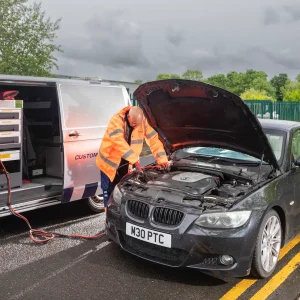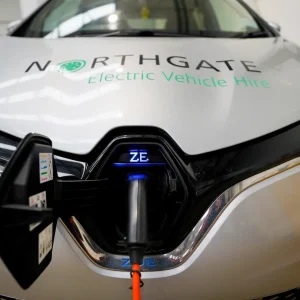It’s likely you don’t need to be told that demands on fleet operators have increased in recent years. Or that with this ever-growing workload, avoiding time-sapping procedures is more important now than ever before.
In fact, according to research from Leaseplan, 88% of business decision-makers are suffering from a thing called ‘admin overload’, but luckily technology can offer a way of easing this administrative burden – while saving the trees, of course.
“Software releases the administrative burden for fleet managers by reducing the time taken to input, monitor and manage relevant information that is needed to support the development of a business,” explains Ashley Sowerby, managing director at fleet solutions company Chevin.

Ultimately, Sowerby tells us, if an organisation is still using spreadsheets, whiteboards or even paper to record all the mountains of information generated by managing a fleet, it can quickly become overwhelmed by the administration involved. And of course, the bigger and more complex the fleet, the more challenging this becomes.
“If a business can remove any unnecessary administration, this can free up time to be spent elsewhere. In the context of fleet management, this means less time fixing discrepancies in information and more time spent ensuring that vehicles are on the road, operating efficiently and reducing ownerships costs.”
Chevin offers its management software Fleetwave to fleets, which Sowerby explains can simplify the organisation’s fleet data into an easily accessible database, providing a clearer visibility of vehicle and driver records alongside the reporting process of performance and costs.
“Apps such as Fleetwave Forms can also help digitally capture information from the field such as fuel receipts, business trips, vehicle defects and accidents. This information can then be directly transferred into the main fleet system, removing the associated risks and time of administrative staff having to manually type up the
paper records.”
Fleet software also has the potential to automate parts of the workloads. “This could be a simple task such as sending out emails to remind drivers of service and MOTs or more complex tasks such as integrating into leasing companies to place vehicle orders,” says Sowerby. “Integration with other systems also helps to reduce data entry and ensures the integrity of the data.”
Jaama, the fleet and asset management software supplier, says reducing company car, van and HGV-related administration and ensuring drivers’ records remain current alongside benefiting from financial savings and improved levels of legislative compliance are all delivered to organisations using its Key2 software.
Martin Evans, managing director of Jaama, tells BusinessCar, “We remain amazed at the number of public and private sector fleets – some of them operating extremely large fleets of vehicles – that continue to manage cars, vans and HGVs via spreadsheets or an antiquated software system or, in some cases, a combination of the two.”
Evans explains that Jaama’s Key2 software has the capability of interfacing with other applications to achieve significant process improvements and efficiencies. “Businesses still relying on an element of manual intervention remain in the dark ages and it is no surprise they complain of an administration burden,” he says.
Risks and costs
It’s not only time-consuming managing a fleet on paper or spreadsheets but also opens the organisation up to unnecessary risk and costs. These can include missing, incomplete or wholly inaccurate paper records.
“Information stored on fleet software is easier and faster to access and report on in comparison to information stored in a cupboard or filing cabinet,” explains Sowerby. “If it’s stored remotely on secure servers, such as the cloud, access is available from anywhere at any time.”

There are often periods of uncertainty in fleet management such as technological or cultural changes to fuel types, autonomous vehicles and mobility management. “Having the ability to access analytical information provides an accurate overview of a fleet which in turn allows managers to make effective procurement and intelligent strategical decisions.”
For many years Jaama has advocated organisations should adopt a ‘spend to save’ strategy in the software arena because savvy fleet decision-makers recognise investment is critical to boosting vehicle operational efficiency and therefore business effectiveness.
He continued: “When selecting software it is vital to identify potential functions that could be run on a more self-service basis. For example, if drivers, including employees who drive their own cars on business, have to complete mileage returns/reclaims then they might as well key information straight into the system where in-built rule sets will ensure compliance with corporate policy.
“Overall, our customers benefit from implementing Jaama’s Key2 system by reducing administration, more effective management of their fleet including ‘grey’ fleet vehicles and providing confidence that they are addressing their duty of care responsibilities.
“The administration benefits mean employees are becoming more productive and able to turn their attentions to other management areas as a consequence of the time savings generated by online fleet management.”

Colin Ferguson, managing director of fleet and optimisation for Trakm8 explains the company’s solutions help to reduce the administrative burden and minimise paperwork from the planning stage through to job completion. Trakm8 Optimisation substantially reduces the amount of time required to plan the routes and schedules of personnel such as field marketing teams or mobile service engineers. It also plans these routes in the most efficient possible way, while still taking into consideration customer service level agreements.
“Eliminating paperwork improves productivity, and also reduces the risk of human error or loss of data,” Ferguson tells us. “It is much easier to store, find, access and distribute data from digital archives than paperwork. This also helps to improve customer service, as accurate digital data enables a company to be much more transparent with, and accountable to, its clients. Finally, fleet management can be a demanding and high-pressure role,
so reducing paperwork and the admin burden can help to alleviate some unnecessary stress.”
Telematics also has well-established benefits when it comes to reducing paperwork, such as quick and easy P11D management to separate and record business and private mileage – this helps to provide accurate mileage records, should an HMRC inspector wish to see them.
Lots of companies use telematics to produce employee time sheets, and geo-fencing alerts to record when a vehicle arrives at, and departs from, a customer’s site. In addition, telematics can offer, or integrate with, daily vehicle check software, helping to improve compliance and road safety, while email reminders about MoT and service dates also help to alleviate the administrative burden, Ferguson explains.
“Smartphone apps or PDA handheld devices are another way of cutting down on paperwork for field workers as well as back office personnel. In companies that employ highly-skilled or high-salary individuals, such as sales reps, service engineers and technicians, less paperwork means more time focusing on the revenue-generating activities, making them more productive. PDAs can also fully or partially automate and digitise the invoice process, by alerting the accounts team when a job is completed and signed off,” he says.
Managing your assets
Sowerby believes asset management will feature in fleet management too. “Employees, tools and equipment can all be managed from one central point, incorporating other areas of management within the business like human resources and operations in one central database.”
Chevin is already seeing sectors such as blue light incorporate inventory management alongside vehicle assets to ensure vehicles are correctly stocked with vital equipment. “Both the vehicle and equipment can then be checked remotely via an app to submit the results directly into one central system,” Sowerby explains.

What’s more, today data and information feeds from contract hire and leasing suppliers, daily rental companies, fuel management operators, fast-fit organisations and residual value suppliers, for example, could immediately update fleet management systems along with information supplied by drivers – mileages, expense claims and working hours – and information from other internal departments on, for example, new starters, employee promotions and changes in driver circumstances.
The future
Automation of tasks will play a large part in the future of fleet management software. This includes aspects such a parts ordering in the workshop through to the process of routing vehicles to relevant fuelling stations.
“Integrations with connected vehicles, fuelling systems, leasing providers, maintenance and parts suppliers will become more common place,” explains Sowerby. “Furthermore, mobility management will become an integral part of fleet management. Fleet managers will need to consider transport beyond the company car. With changes such as the possible introduction of clean air zones in cities, the most cost effective and practicable travel options need to be considered. We don’t see this as the end of the company car
but more an extension of travel options to best fit the needs of both the employee and the business.”
There is still huge growth potential for fleet optimisation solutions, says Trakm8’s Ferguson. “Ultimately it will become as ubiquitous as telematics. Beyond that, the technology now exists to digitise almost everyaspect of fleet management.”
What fleet managers really want is integrated, single-source solutions, Ferguson explains. “This will enable them to access all the data from one portal, in
a user-friendly format. Delivering that fully-integrated, all-in-one solution is the current challenge for suppliers.”





